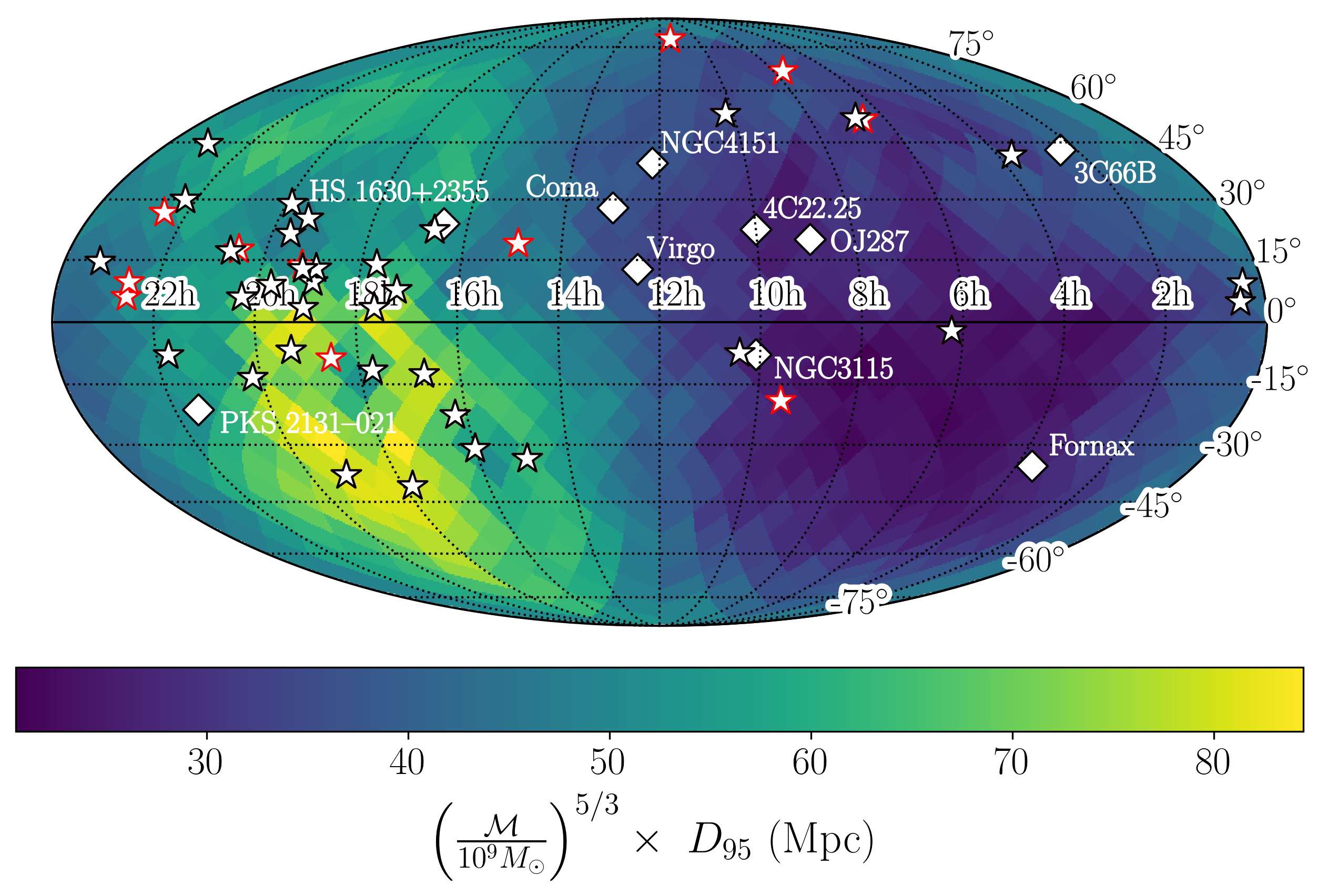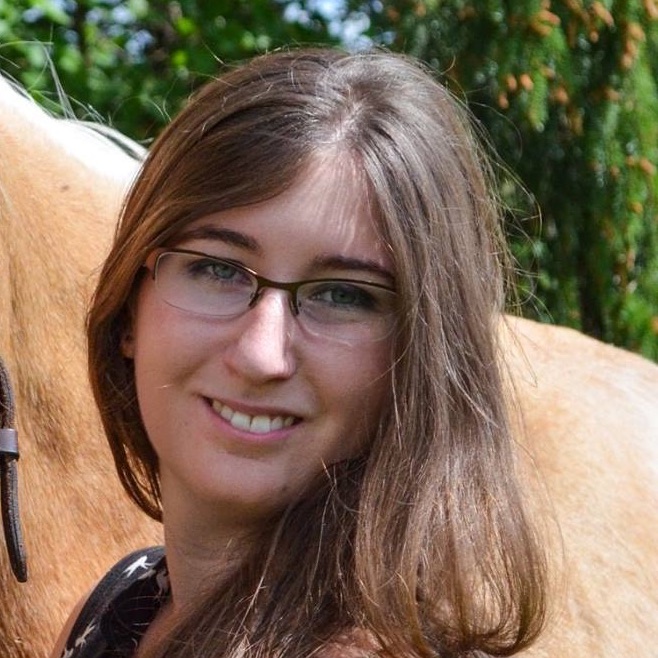NANOGrav Continuous Wave Search

NANOGrav limits on the luminosity distance to a 109 solar mass binary. Figure Credits: Caitlin Witt for the NANOGrav collaboration.
The NANOGrav 12.5-year Data Set: Bayesian Limits on Gravitational Waves from Individual Supermassive Black Hole Binaries
When summarizing my first paper (check it out here if you haven’t yet!), I included a line stating “Searching for gravitational waves with pulsars is a difficult task, and as we continue to add observations, it won’t get any easier.” Following every cliché about hindsight and expectations, this did indeed turn out to be true. Fortunately for me and my research, this means things were about to get interesting.
When my research collaboration, The North American Nanohertz Observatory for Gravitational Waves (NANOGrav) first analyzed our 12.5-year data set, we were seeking a signal that’s made by the combination of all of the supermassive black hole binaries in the universe called the gravitational wave background. These dynamic duos are formed in the aftermath of galaxy mergers, and like galaxies, they come in all different shapes and sizes, which means the gravitational waves these binaries emit come in a pretty huge range. As these gravitational waves wash over us, we don’t just see one at a time; instead, their signals combine to form an unpredictable cacophony of red noise in our pulsar timing data, with a unique pattern that emerges when we compare pairs of pulsars’ data sets. In the 12.5-year data, NANOGrav observed low-frequency red noise for the first time, but not the pattern that would have confirmed that this was due to gravitational waves. We’re optimistic that this confirmation will come in the near future, but in the meantime, there was more work to do.
While we expect to detect the hum of the gravitational wave background first, there’s still the possibility that there’s one supermassive black hole binary in the universe that’s emitting gravitational waves that are particularly bright. If that’s the case, pulsar timing arrays like NANOGrav can tease these signals out from the noise of the background.
This project represents the very first time there’s been enough low-frequency red noise in a pulsar timing array data set that searches for continuous gravitational waves have needed to worry about it. While this was a complication, and it took our team time to develop new methods to prevent the red noise process from confusing our continuous wave searches, this is a good problem to have! In future data sets, as the gravitational wave background comes into reach, we know exactly what to do as we keep hunting for continuous waves.
Besides overcoming this roadblock, in this search, we have set some of NANOGrav’s best limits to date on the presence of nearby supermassive black hole binaries, devised new methods to more accurately model the locations of the pulsars within our array, and examined the interplay between these two distinct types of signals in our gravitational wave models. With more data, pulsar timing array science may not be getting any easier, but things are certainly getting interesting!
For more details, find the full paper here on ArXiv!.
